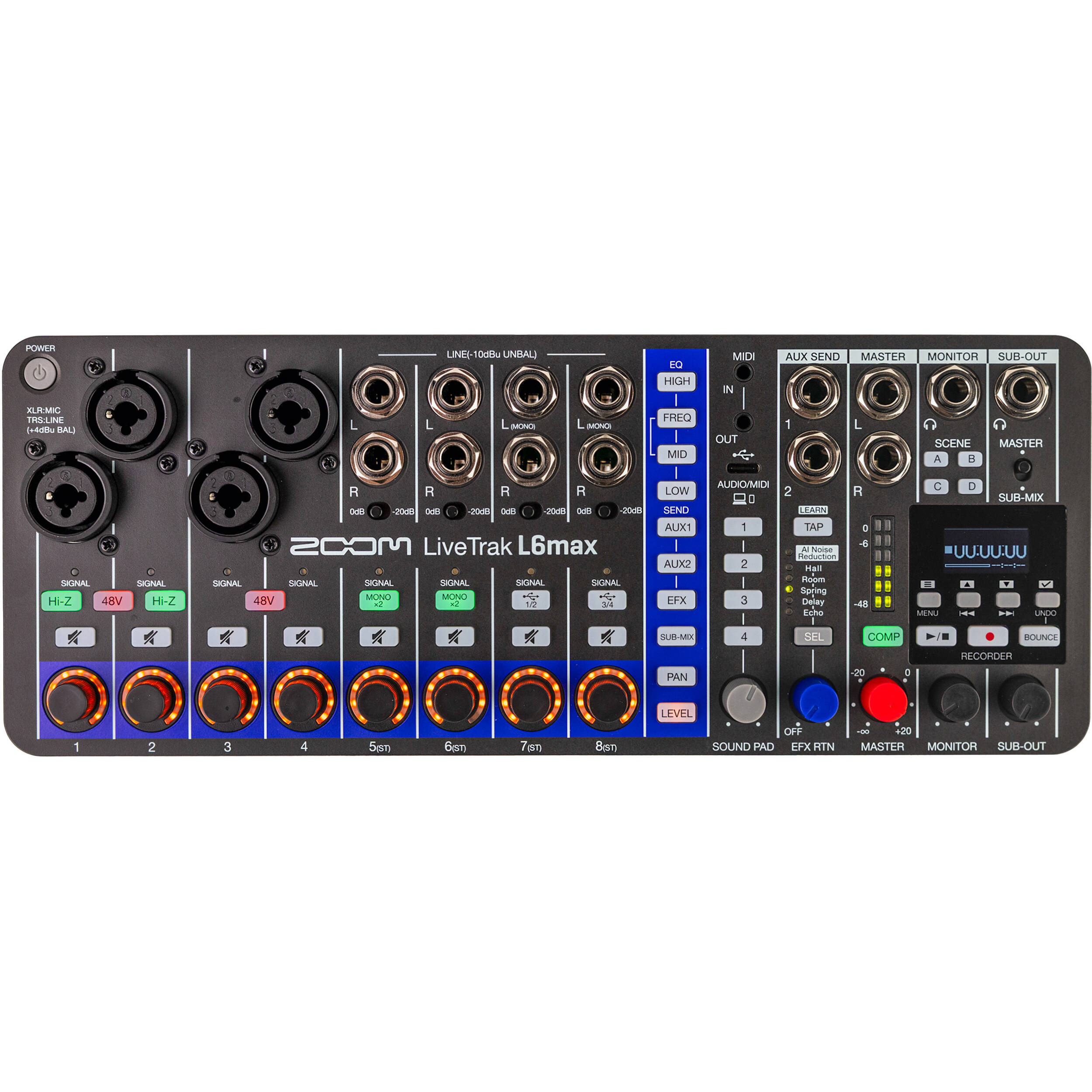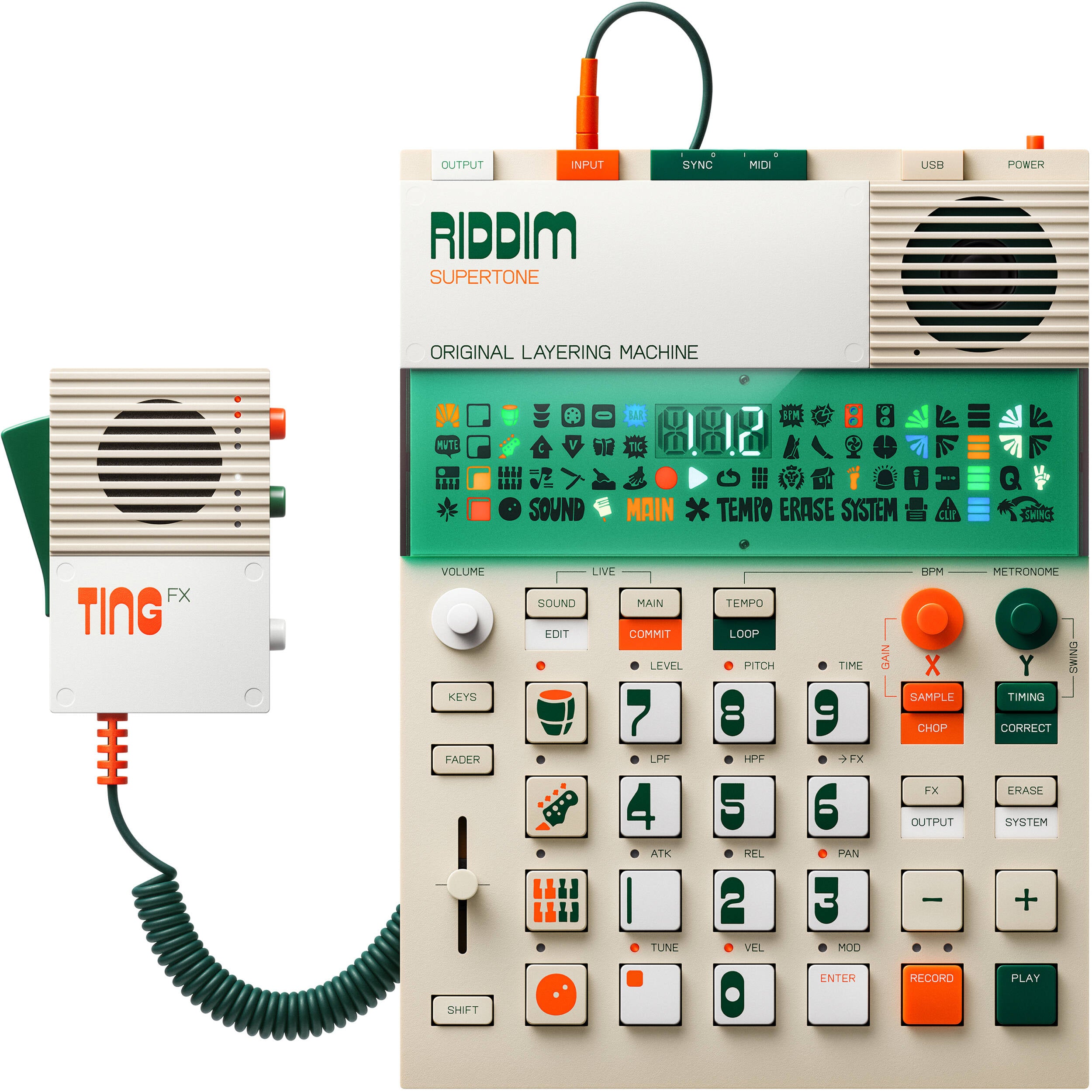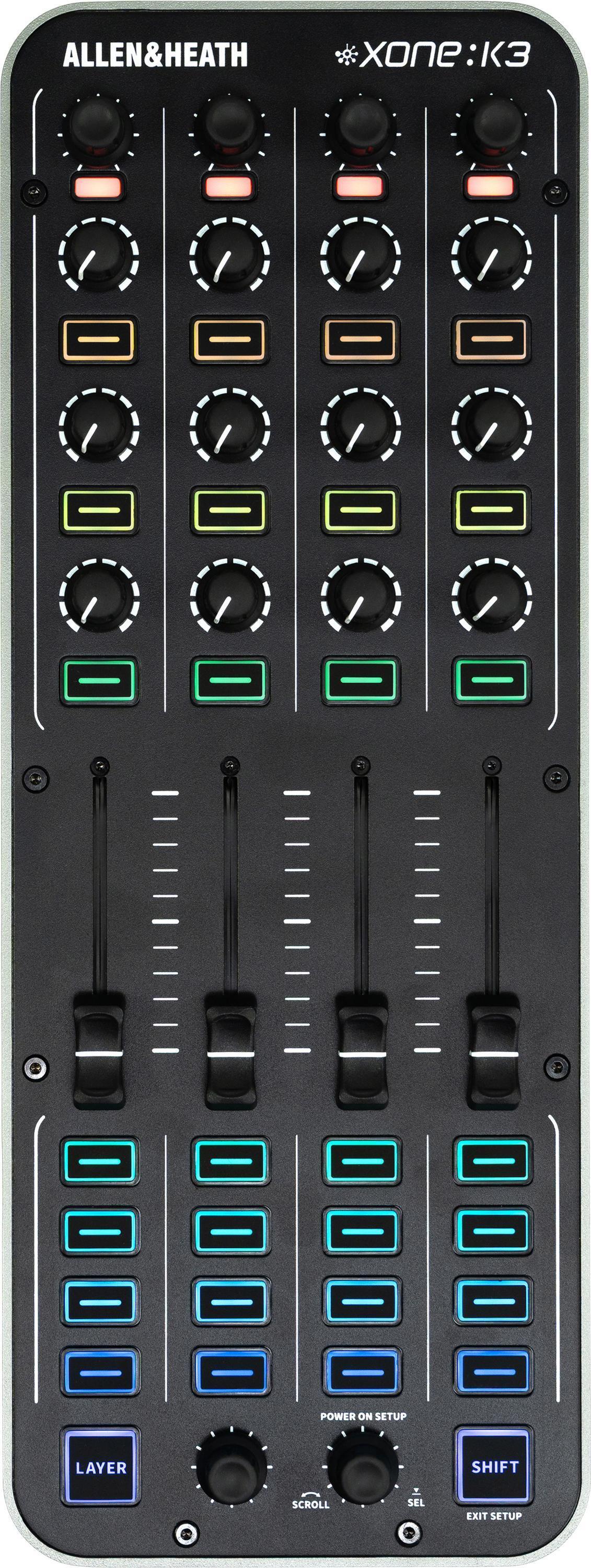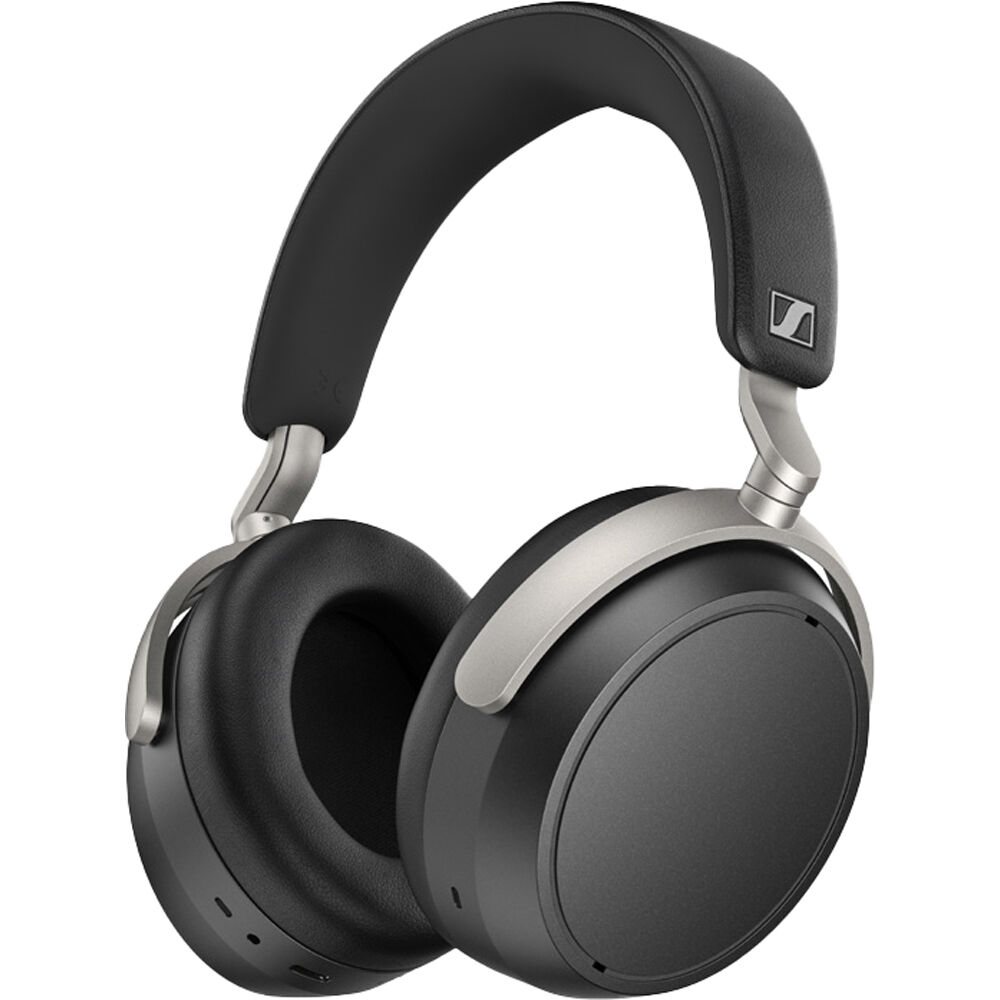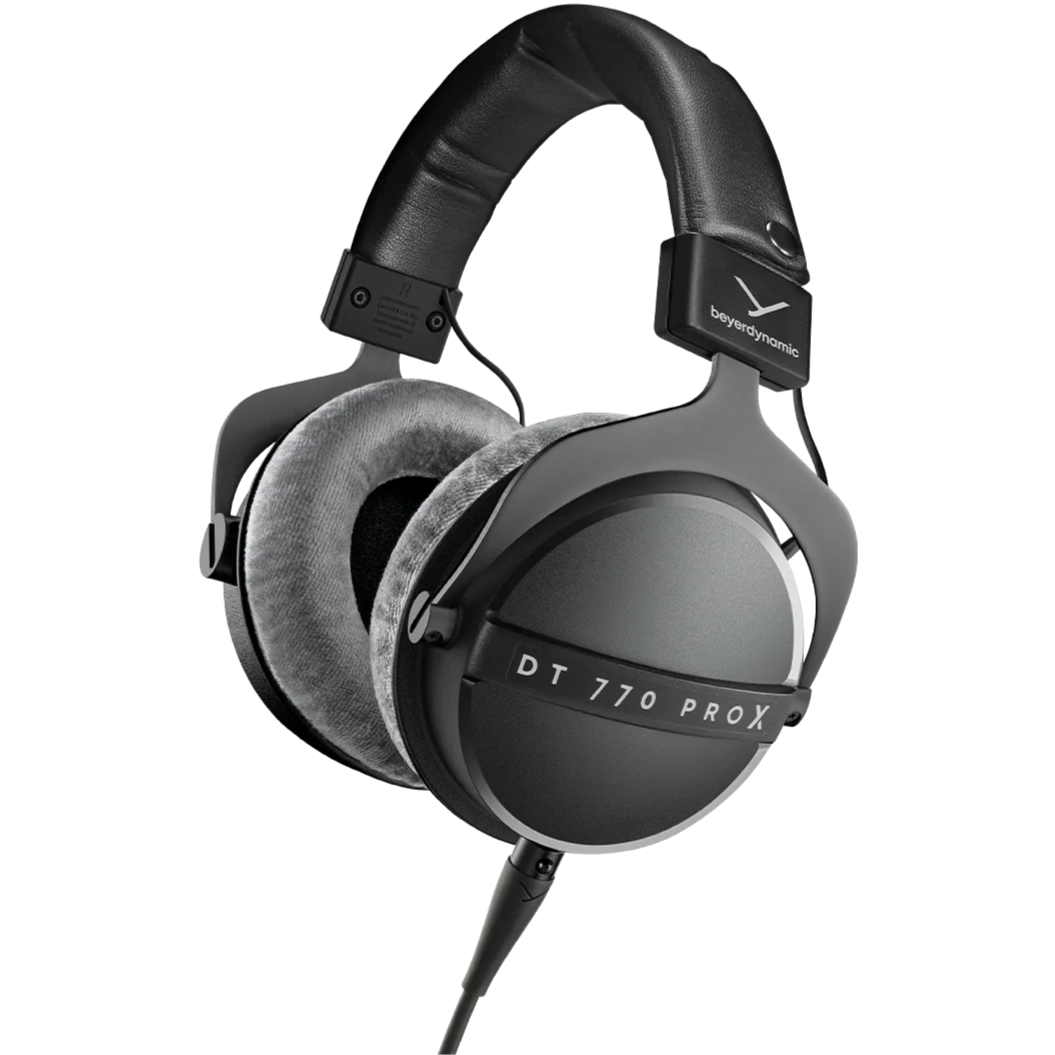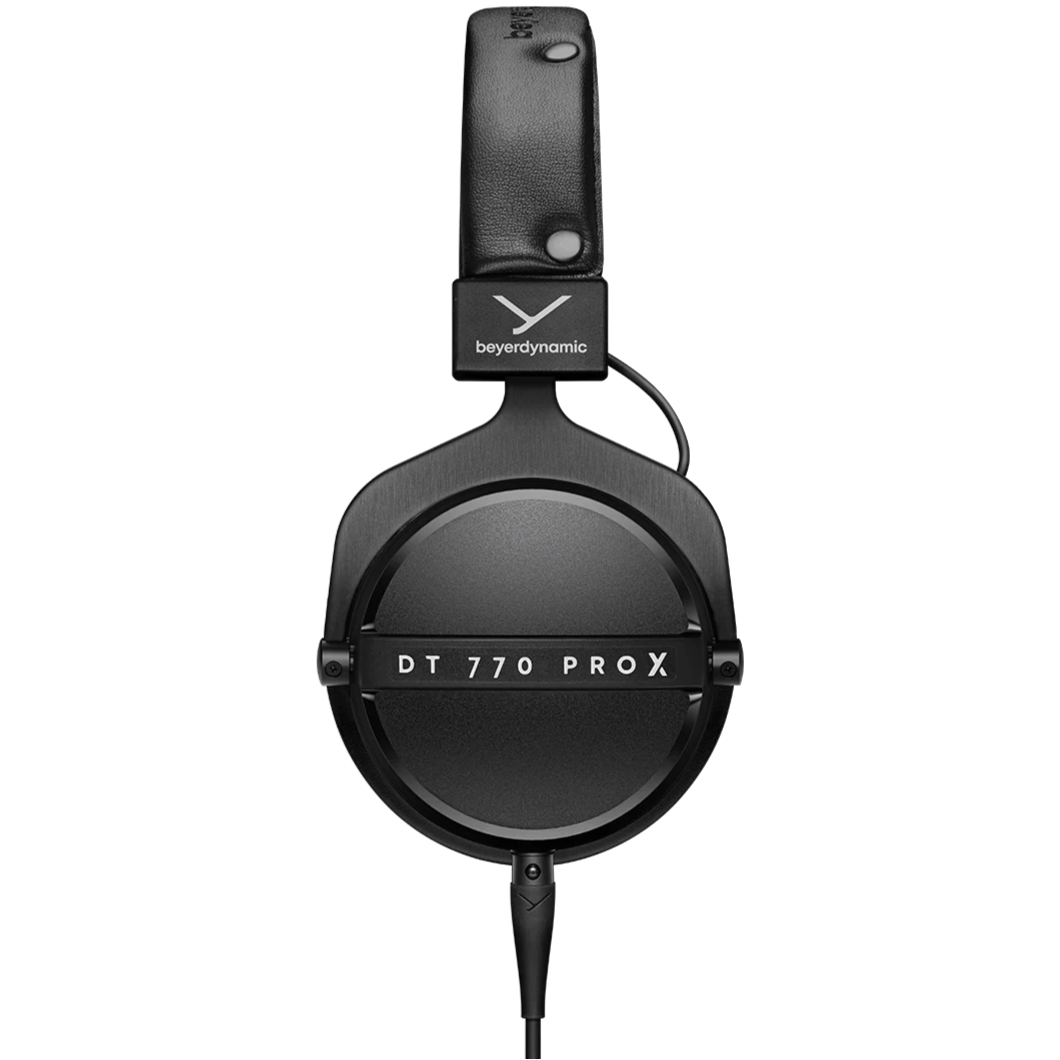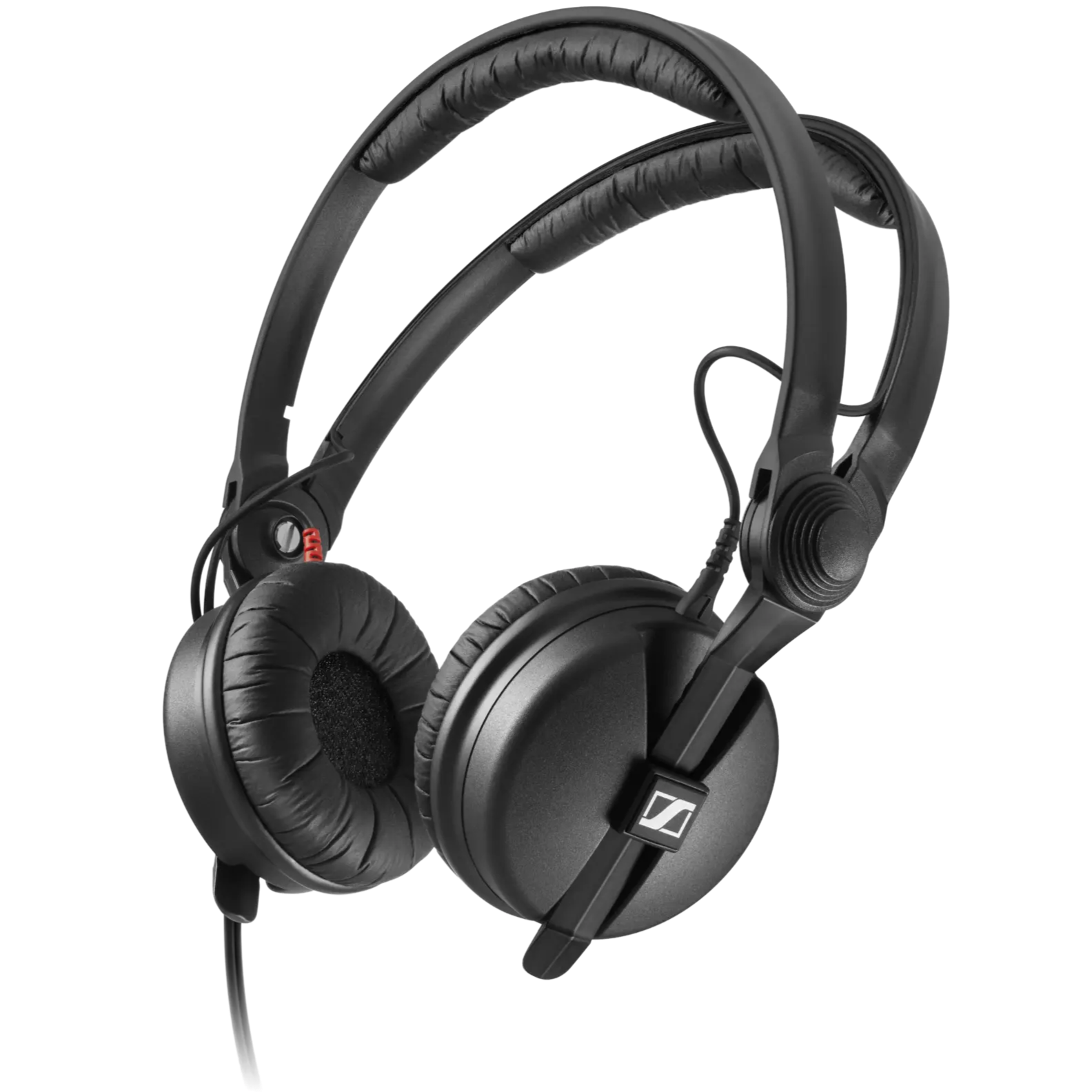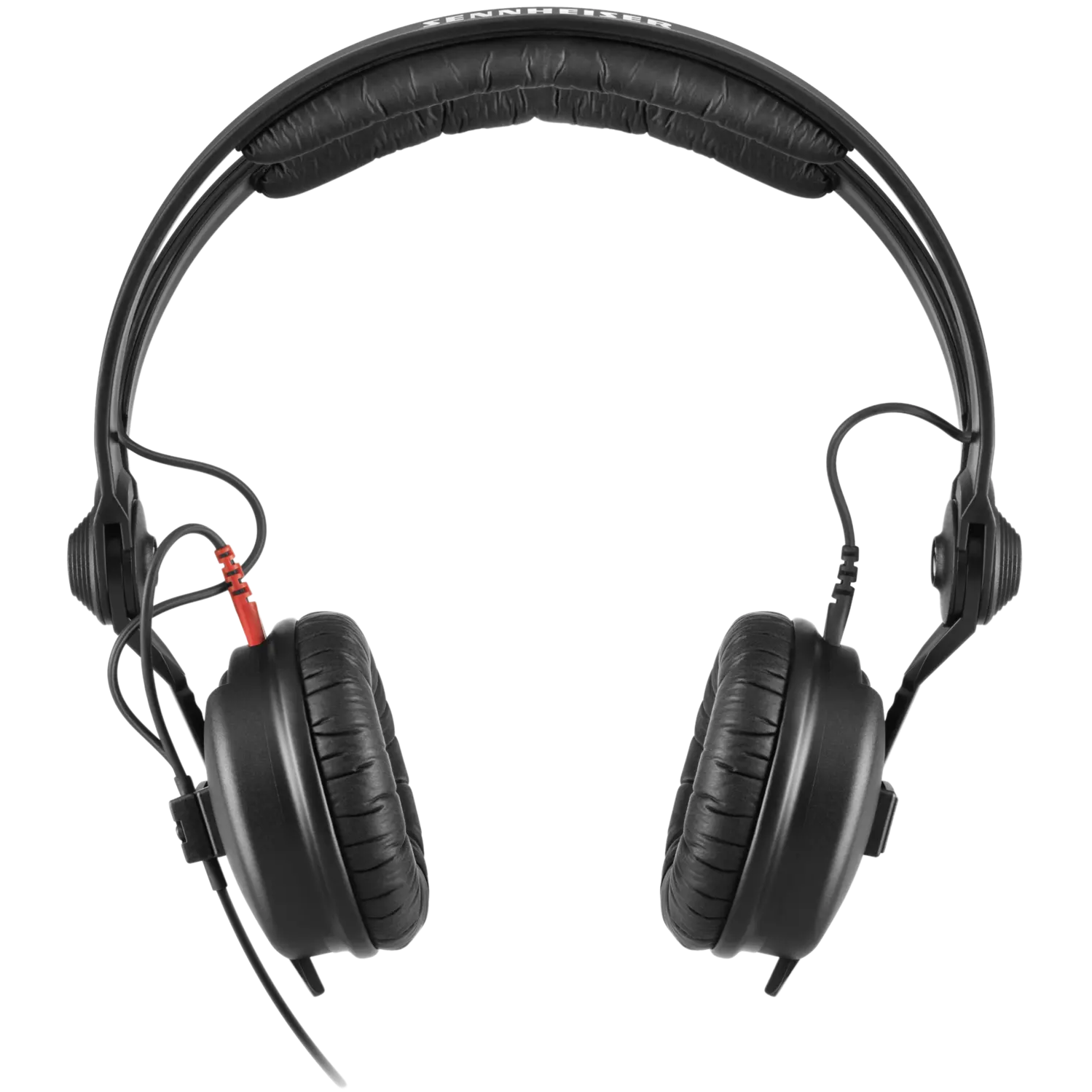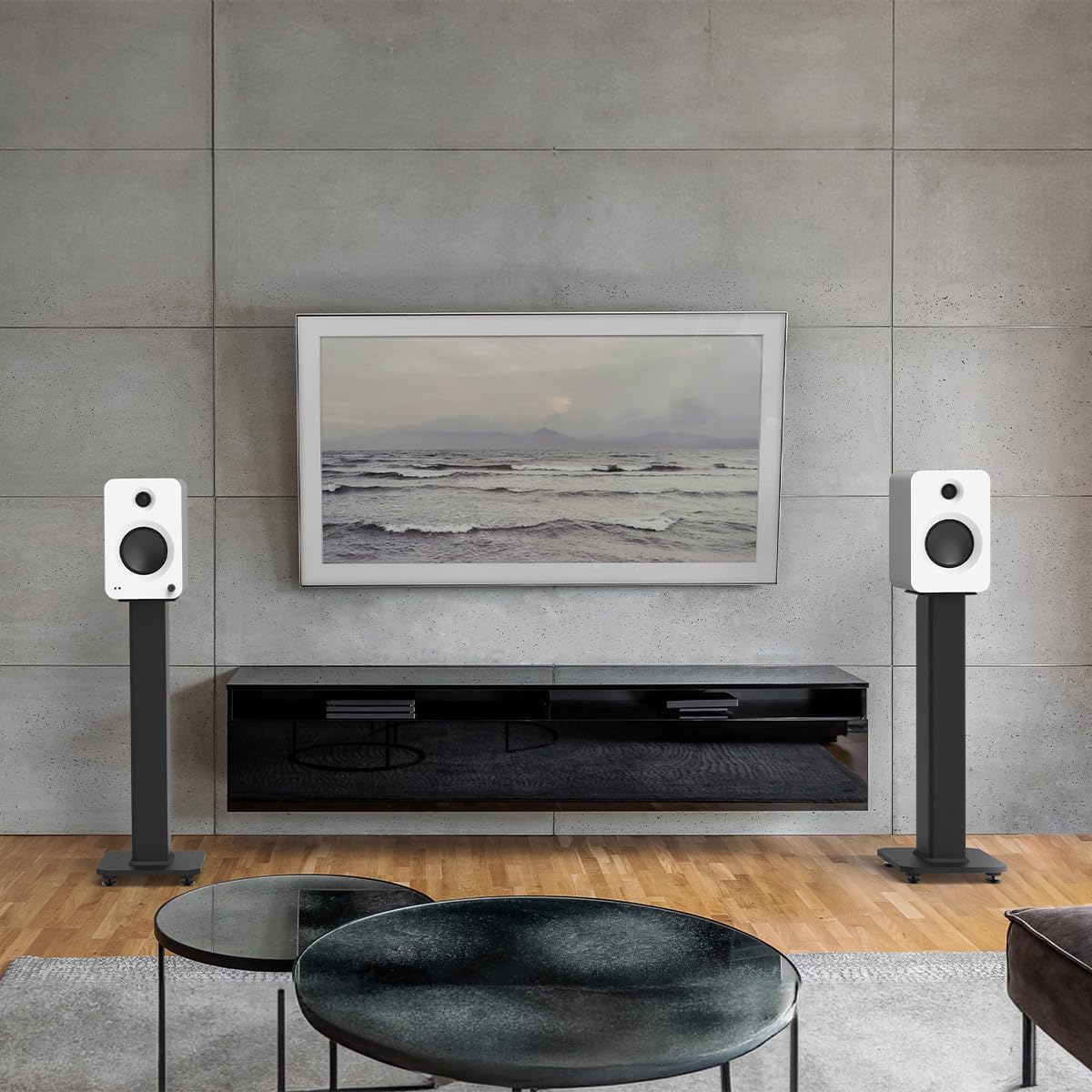Journal
🎹 Arturia AstroLab 37: Compact 37-Key Synth with Full AstroLab Power
The Arturia AstroLab 37 delivers full AstroLab engine power in a compact 37-key format—featuring aftertouch keys, bi-timbral layers, 44 instruments, 1,800+ presets, vocoder input, and extensive I/O for studio and stage.
Read more🎛️ Akai MPC Live III: Standalone Music Production Powerhouse with 3D Pads & Gen-2 Performance
The Akai MPC Live III combines a next-gen 8-core Gen-2 processor, expressive 3D MPCe pads, built-in mic and speakers, 8 CV/Gate outputs, and MPC3 OS—delivering a complete standalone production and performance experience without a computer.
Read more2025–2026 Soundium Audio Interface Guide — Faster Setup, Better Takes
This fast, no-nonsense guide helps you choose the right audio interface, set it up in minutes, and avoid common pitfalls—whether you’re buying your first box or refining a pro rig. The goal is clarity and speed, with a practical Soundium point of view woven throughout the guide. What an audio interface does (in one breath) It converts microphones/instruments to digital (into your computer) and back to analog (to speakers/headphones), while giving you control over gain, monitoring, and routing. Quick chooser: your use-case → what to buy Solo voice / podcast (one mic) 1 XLR mic input with 48V, headphone out, and direct monitoring. Quick picks: Focusrite Scarlett Solo 4th Gen, Audient iD4 MK2, Arturia MiniFuse 1, Universal Audio Volt 1. Vocal + guitar / two mics at once 2 combo XLR/Line inputs with separate gains. Quick picks: Focusrite Scarlett 2i2 4th Gen, Audient iD14 MK2, SSL 2 MK2, Arturia MiniFuse 2, Universal Audio Volt 2. Several sources at the same time (duo, small band, multiple synths) Look for 4–8 inputs (mic/line), ideally with some MIDI I/O. Quick picks: Focusrite Scarlett 4i4 / 18i20 4th Gen, Audient iD24 / iD44 MK2, SSL 12, Universal Audio Volt 476 / 476P. Streaming / content (OBS, Discord, live tutorials) Built-in loopback makes life easy (mix DAW/system audio + mic into one feed). Quick picks: Audient EVO 4 / EVO 8 / EVO 16, Zoom AMS-22 / AMS-24 / AMS-44, RØDE RodeCaster DUO (all-in-one). Mobile (iOS/Android) or ultra-compact rigs Class-compliant USB, simple I/O, low fuss. Quick picks: IK Multimedia iRig HD X / iRig 2 / iRig Pro I/O, RØDE AI-Micro, Zoom AMS-22. Tour-proof / premium stability Rock-solid drivers, flexible routing, long-term investment. Quick picks: RME Babyface Pro FS, RME Fireface UCX II, Apogee Duet 3, SSL 18. Also notable: Universal Audio Apollo Solo / Twin X if you value UAD plug-ins and onboard DSP. Focusrite vs Audient vs SSL vs Arturia — what’s the real difference? Focusrite Scarlett (4th Gen): the “it just works” starter line; stable drivers, clean sound, tons of tutorials. Audient (iD / EVO): iD = clean preamps and tactile knobs; EVO = auto-gain + simple loopback. Easy, creator-friendly workflow. SSL (2 / 2+ / 12 / 18): sturdy build, big knobs, and the tasteful 4K tone button for subtle character. Arturia (MiniFuse 1/2/4): minimalist, compact, tidy control app, handy hub-style I/O on some models. Bottom line: all four are solid. Choose by I/O count, features (loopback/MIDI/dual headphones), and the ergonomics you prefer. Mini glossary (30-second clarity) Combo input: one jack accepts XLR (mic) or ¼″ (line/instrument). 48V phantom: power for condenser mics (dynamics like SM58 don’t need it). Direct monitoring: hear yourself straight from the interface (near-zero delay). Loopback: route DAW/system audio + mic into a single input for streaming apps. MIDI I/O: connect hardware synths/controllers without a separate MIDI interface. “Out of the box” setup (2-minute cheat sheet) Install drivers: Windows—use the manufacturer’s ASIO driver; macOS—CoreAudio works, still install the utility. Start-safe settings: 48 kHz sample rate, 128-sample buffer. If playing/recording feels laggy, try 64 (if stable). For mixing, bump to 256–512 for CPU headroom. 48V: turn on only for condenser mics. Gain staging: speak/play normally and set peaks around −12 dBFS in your DAW (clean headroom). Monitoring: enable direct monitoring for vocals/instruments you’re tracking. Streaming: if your interface has loopback, enable it in the control app and select it in OBS/Discord. Quick test: record 10–20 seconds. If you hear pops/dropouts, raise buffer one step. Pro tip: For timing-critical playing/recording, wired headphones keep monitoring tight. Wireless is great for listening; for performance, only DJ-grade transmitter systems (not regular Bluetooth) feel truly “instant.” Fast scenarios (so you don’t overthink it) Podcast/voice-over solo: 1 XLR in, 48V, direct monitor, one big monitor-mix knob = ✅ Singer-guitarist: 2 combo inputs with separate gains; two headphone outs are a bonus. Synth stack or band scratch: 4–8 line/mic inputs; MIDI I/O saves extra dongles. Tutor/streamer: loopback + clear input meters + one-click “stream” mode (Zoom AMS) = less fiddling, more doing. Laptop + phone/tablet: class-compliant USB; check if the interface can be bus-powered or needs an external supply/adapter. Advanced asks (short answers you’ll be happy we included) Do you need 32-bit float? If you record unpredictable sources (shouts, wide dynamics) and hate riding gain, 32-bit float can rescue clipped takes and keep quiet parts usable. For most music workflows, 24-bit is still great—float is a safety net, not a must-have. Mic vs Line vs Instrument (Hi-Z) Mic inputs are for microphones (need preamp gain). Line is for mixers/synths (already at line level). Instrument/Hi-Z is for guitars/basses direct—higher impedance so pickups don’t sound dull. Plug guitars into Hi-Z, not line. Grow later with ADAT Many 2-input interfaces can add 8 more mic inputs over ADAT Lightpipe using an external preamp. Nice “buy small now, expand when needed” path (e.g., Scarlett 18i20, Audient iD24/iD44 support ADAT). Using an SM7B (or other low-output dynamics)? Pick an interface with about 60 dB of clean gain or add an inline booster (Cloudlifter/FetHead). You’ll get healthy level without cranking noise. Headphones that need juice If you run 250–600 Ω headphones, check the interface’s headphone power spec; high-impedance cans may want a small dedicated amp. Rule of thumb: source output impedance ≪ headphone impedance. USB-C vs Thunderbolt Thunderbolt can shave a little off round-trip latency at tiny buffers or high channel counts, but driver quality dominates everyday performance. A good USB-C interface with solid drivers is plenty for most creators. DC-coupled outputs (modular folks) Want to send CV from your DAW to Eurorack? Look for DC-coupled outputs. Otherwise, a MIDI-to-CV box is simpler. Where do the sub-collections fit? (USB, Thunderbolt, MIDI, iOS) USB Audio Interfaces (most people land here) Works on modern Macs/PCs and—if class-compliant—also on phones/tablets. Choose by I/O count, loopback, driver quality and bus power. This is the default path for creators in 2025. Thunderbolt Audio Interfaces (niche, pro I/O or tiny buffers) Useful if you need very low latency at tiny buffers and/or higher channel counts with tight CPU budgets. Day-to-day, drivers matter more than the port. If you don’t know you need TB, you probably don’t. MIDI Interfaces (not audio) DIN-MIDI I/O for connecting hardware synths/drum machines. No mic/line audio here—pure MIDI timing and routing. iOS Interfaces (how to position in 2025) iPhone/iPad are moving to USB-C. Many USB class-compliant interfaces now work directly with the latest phones/tablets. Keep an “iOS & Mobile” collection as a curated shortcut for people who want guaranteed, compact, phone-friendly gear. What belongs here: ultra-portable units or mobile-specific designs (simple power needs, short cables, onboard 3.5 mm monitoring, single-purpose tools). Great fits you already stock: IK Multimedia iRig 2 (analog TRRS guitar; note headset-jack caveats on USB-C phones), IK Multimedia iRig HD 2 (digital guitar over USB), IK Multimedia iRig Pro I/O (compact XLR + instrument + MIDI), IK Multimedia iRig Pre HD (XLR mic for mobile with 48V), RØDE AI-Micro (tiny dual-mic TRRS interface), Zoom AMS-22 (class-compliant USB-C that works on desktop and mobile). FAQ (the ones we get every week) Will one input be enough? Yes for solo voice. If you ever plan to record two sources at once (voice + guitar, two mics), get two inputs. Do I need 48V? Only for condenser microphones. Don’t enable it for dynamics or ribbons (unless their preamp specifically requires it). Is this good for streaming? Look for loopback. Without it you can still stream using virtual audio cables, but it’s fussier. Can I use it with my phone/tablet? Yes if it’s class-compliant and you provide enough power (USB-C/Lightning adapter; sometimes a powered hub). For USB-C phones, prefer digital USB-C interfaces over older TRRS analog adapters. Focusrite vs Audient vs SSL vs Arturia—what’s the real difference? All four are solid. Focusrite = simple & stable; Audient = clean sound + handy features; SSL = great feel + tasteful character; Arturia = minimalist/compact with a tidy control app. Choose by inputs/features/ergonomics, not FOMO. What to do next Decide how many inputs you truly need today (and whether loopback matters). Pick one from the Quick picks above that fits your scenario and budget. Follow the 2-minute setup and you’re making sound—no support ticket, no forum rabbit hole. If you’re stuck between two models, tell us two things: what you’ll record and how many sources at once. We’ll point you straight to the best fit. Soundium has your back.
Read more🎙️ Zoom H6studio: Studio-Grade Power in a Portable Handy Recorder
The Zoom H6studio delivers ultra-low-noise F-Series preamps, 32-bit float recording, large-diaphragm XY mics, and advanced limiters—all in a rugged Handy Recorder for €449.
Read more2025–2026 Soundium Acoustic Treatment Guide — Smarter Sound for Every Room
Proper acoustic treatment will change your sound more than any plugin. This 2025–2026 Soundium guide shows what truly works, when you can skip it, and how to upgrade smartly from budget setups to full pro studios.
Read moreAlphaTheta ChordCat: Expressive Chords, No Theory Required
TL;DR: The AlphaTheta ChordCat is a revolutionary standalone chord generator for producers and performers. With velocity-sensitive pads, strumming, scale modes, and MIDI/CV output, it makes creating rich harmonic ideas intuitive — even without music theory. Introduction You don’t need years of music theory to write beautiful chord progressions. The AlphaTheta ChordCat, launched in 2025, distills harmony into an intuitive, portable performance unit. Whether you're a beatmaker, finger drummer, or synth nerd, the ChordCat makes expressive chord building as easy as tapping a pad — and opens new musical paths without staring at piano roll. Created by AlphaTheta (the Pioneer DJ sister brand), ChordCat focuses on the feel of chords. Tap a pad, hear a lush voicing. Hold one, strum it. Sequence them, modulate them, map scales — all without leaving the vibe. Real-World Reactions “ChordCat made me rethink my chord workflow. Super playable, and perfect with my Digitakt.” – Elektronauts user “Not just for beginners — even as a theory nerd, it helped me experiment more freely.” – Reddit “It’s like having a jazz keyboardist in your gear bag.” – YouTube comment 🎛 Key Features & Benefits 16 Velocity-Sensitive Pads with Strum & Hold Specs: Responsive RGB pads with aftertouch support, chord strum function, sustain hold Benefit: Play and perform complex chords with expressive control — like finger-drumming, but harmonic. Chord Sets & Custom Voicings Specs: Built-in chord banks, scale filters, programmable custom sets Benefit: Stay in key, explore exotic voicings, or save your go-to progressions. MIDI, USB-C & CV/Gate Output Specs: Full-sized MIDI I/O, USB-C (host & device), 2x CV/gate outs for modular control Benefit: Integrates with DAWs, synths, grooveboxes, and Eurorack setups. Scale Lock & Root Shift Modes Specs: Diatonic & chromatic scale lock, real-time root shifting Benefit: Play harmonically correct chords, modulate easily during performance. Compact & Battery-Powered Specs: Built-in lithium battery (~6h), lightweight design Benefit: Take it anywhere — from couch to stage to studio. 🎥 Watch It in Action Get a quick visual overview of the AlphaTheta ChordCat in action — direct from the creators: 🎯 Who It’s For Live performers wanting a fast harmonic controller DAWless jammers who need hands-on chord creation Beatmakers adding rich chords to sample-based sets Synth players expanding expressiveness without keys ⚙️ Quick Specs 16 RGB velocity-sensitive pads Aftertouch, strum & hold functions Scale/chord bank modes + custom sets MIDI DIN in/out + USB-C host/device Dual CV/gate outputs Rechargeable battery (up to 6 hours) Dimensions: approx. 270mm x 180mm x 30mm Weight: under 1kg 🧩 Pros & Cons ✅ Pros: Easy access to complex chords Integrates with MIDI and modular setups Great for live performance or idea generation No screen = distraction-free workflow Portable with good battery life ⚠️ Cons: No built-in sound engine No screen might feel limiting for some Some advanced users may prefer more voicing editing depth 🧭 Final Thoughts The AlphaTheta ChordCat is more than just a chord trigger — it's a bridge between inspiration and execution. Whether you're jamming DAWlessly or layering pads in Ableton, this box lets your fingers do the harmonizing. It’s simple on the surface, but opens deep creative potential for producers of any level. 🛒 Where to Buy The AlphaTheta ChordCat is available now at Soundium. We stock gear locally for fast, secure delivery — ready to plug into your creative workflow. Free pickup shipping on orders over €149 Free courier shipping on orders over €299 Secure checkout and interest-free payments Support from real musicians who know the gear 🔗 Order the AlphaTheta ChordCat from Soundium ❓ Still Unsure? Need help figuring out if the ChordCat fits your setup or workflow?Reach out to our team — we’ll help you find your match.
Read moreThe Hottest Gear Releases of 2025 (Q1–Q2): Studio, DJ & HiFi Picks
From cutting-edge studio tools to flagship DJ controllers and next-gen hi-fi gear, these are Soundium’s top picks from 2025’s Q1/Q2 gear drops — all tested, curated, and ready to inspire.
Read more2025’s Most Interesting Speakers: From HiFi Desktops to Studio & PA Power
If headphones got smarter in 2025, then speakers got sharper — in both sound and purpose. We’ve entered a new era where compact monitors rival older hi-fi towers, Bluetooth speakers sound stage-ready, and portable PA systems bring pro-level clarity without breaking your back. At Soundium, we tracked this evolution and curated a shortlist of speaker systems that stood out — not just on spec sheets, but in real rooms. Here’s what’s actually worth plugging in this year. 🛋 Lifestyle & HiFi Speakers Kanto RENKanto’s most refined design to date — combining beautiful walnut or matte finishes with DSP-driven clarity and USB-C connectivity. These speakers sound hi-fi but behave modern: plug directly into your laptop, turntable, or TV.Ideal for: Home setups where looks matter as much as sound.Soundium Selects “Can’t believe how clean these sound with vinyl. Bass is tight, not boomy — and they look like furniture, not gadgets.” – Reddit user Onkyo GX-10DB / GX-30ARC SeriesJapanese-designed powered speakers that punch far above their price. The 10DB is pure analog with excellent detail for desktops, while the 30ARC adds HDMI ARC for seamless TV pairing. Both share a clean, musical tone rarely found at this size.Ideal for: Students, casual listeners, and minimalist TV audio setups. “Honestly the best sound I’ve heard from anything under €200. And they don’t try to overdo the bass, which is rare.” – YouTube comment Bang & Olufsen Beosound A1 (3rd Gen)A Bluetooth speaker that defies its size — waterproof, ultra-portable, and tuned with B&O’s signature warmth. The third-gen model improves battery life and call quality, while keeping its minimalist charm.Ideal for: Travel, design lovers, and background listening with class.Soundium Selects 🎛 Studio Monitors ADAM Audio D3VNew for 2025, this evolution of ADAM’s entry-level line features updated U-ART tweeters, wide sweet spot, and improved rear porting. Balanced, punchy, and great for producers who want honest sound on a budget.Ideal for: Music production, video editing, and home studios.Soundium Selects “I sold my Rokits and went with D3Vs. Stereo image is just... wider. Can actually hear panning decisions now.” – Gearspace forum Mackie CR Series (Gen 3)Still unbeatable for their price, Gen 3 brings better build quality and cleaner mids. Great for hybrid listening — watch movies, produce beats, or just play Spotify without fatigue.Ideal for: Bedroom studios, students, and first-time producers. KRK Kreate SeriesThe newest take on KRK’s famous yellow-coned DNA. Tightened low-end, less hyped highs, and better balance overall. You still get punchy dynamics — but now with more control.Ideal for: Beatmakers and creators who want vibe and accuracy. 🔊 PA & Portable Sound HK Audio POLAR MK2 SeriesColumn-style PA systems with sleek looks and wide dispersion. The MK2 brings faster setup, better app control, and improved SPL — perfect for mobile performers, events, or boutique venues.Ideal for: DJs, small venues, public speakers.Soundium Selects “The POLAR is shockingly easy to carry and doesn’t sound ‘small’. You feel the kick, even outdoors.” – Mobile DJ blog Alto Professional TX4 SeriesAffordable, rugged, and surprisingly clear. The TX4 series delivers solid SPL for rehearsal rooms, events, or backup rigs — with upgraded drivers and built-in protection.Ideal for: Beginners, schools, and gigging musicians who value reliability. 🧭 Final Thoughts In 2025, speakers are no longer split between “studio” or “lifestyle.” Many blur the line — offering detailed sound, smart features, and compact design in one box. Whether you're fine-tuning a mix or playing dinner party playlists, the models above prove that great sound doesn’t need to be complicated. → Explore Soundium’s full speaker lineup and find the system that fits your space.
Read more2025’s Most Interesting Headphones: What’s New in HiFi, Studio, and DJ Gear 🎧
Discover 2025’s most interesting headphones, from studio-grade Beyerdynamics to modular DJ sets and AI-personalized HiFi earbuds. Curated by Soundium for listeners, creators, and performers who want more than just good specs.
Read more1010music Bento Review: Your Portable Sampling Production Lab
The 1010music Bento packs DAW-style production, sampling, and effects into a standalone touchscreen groovebox. Eight flexible tracks. No laptop needed.
Read moreArturia Astrolab 88 Review: Stage Performance, Redefined
Discover the Arturia Astrolab 88, the perfect stage keyboard for performers seeking versatility and power. With seamless Analog Lab integration, bi-timbral performance, portable design, and 1300+ preloaded sounds, it’s built to redefine your live performances. Explore its game-changing features and why it’s a must-have for stage musicians.
Read moreBeyerdynamic DT 770 Pro X Review: Versatility, Comfort, and Audio Precision
Introduction For audio enthusiasts and professionals alike, the right pair of headphones is never just a purchase; it’s an essential investment in clarity and performance. Enter the Beyerdynamic DT 770 Pro X, an evolution of the much-loved DT 770 Pro series. These headphones bring versatility, exceptional audio quality, and enhanced comfort to the studio or the road. Tailored for producers, podcasters, or even casual listeners seeking precision, the DT 770 Pro X touts modernized upgrades to captivate both newcomers and long-time Beyerdynamic fans. But with the flood of options in the competitive headphone market, do the Pro X headphones live up to their predecessors’ legacy? After scouring opinions from Reddit forums, influencer reviews, and firsthand impressions, we’ll walk you through all the reasons this model could become your next audio staple. Sonic Signature Built for Professionals At the core of the DT 770 Pro X is its revamped STELLAR.45 driver, delivering top-of-the-line clarity and precision. Unlike other models in the DT 770 lineup, these headphones maintain Beyerdynamic’s signature focus on clear treble, warm mids, and punchy bass while offering improved balance with reduced distortion. Spanning a frequency range of 5Hz to 40kHz, this closed-back design excels in picking up intricate details, enabling it to handle everything from vocal recordings to high-energy EDM tracks. Users on Reddit frequently praise its ability to deliver immersive, crystal-clear audio without sacrificing tonal accuracy. Key Sound Performance Highlights Enhanced Sub-Bass: Many Reddit users have commented on the improved depth in the bass, with one claiming, “The sub-bass is deeper and fuller than the DT 770 Pro. An absolute treat for audiophiles!” Low Distortion at High Volume: The STELLAR.45 driver ensures a clean response, allowing these headphones to maintain accuracy even at higher volumes. Wide Soundstage: Several reviewers have noted that for a closed-back design, the Pro X creates a surprisingly spacious and immersive listening experience. For professionals, these features shine particularly when editing or mixing tracks, ensuring every layer of sound can be heard as intended. Unmatched Comfort for Long Sessions When it comes to long listening hours, comfort is just as essential as sound quality, and this is an area where the DT 770 Pro X excels. Beyerdynamic has revamped the design to cater to comfort-centric users, making these headphones a reliable choice for extended use during marathon mixing sessions or endless gaming nights. The memory foam ear cushions wrapped in premium velour material offer breathability while maintaining a snug fit. Reddit users have been quick to highlight this improvement; one noted, “These literally feel like clouds on your ears. No discomfort even after wearing them for hours at a stretch!” Comparison to the Original DT 770 Pro Clamping Force Adjustment: Unlike the previous models, the Pro X boasts a more ergonomic fit with a lower clamping force, making it glass-wearer friendly. Detachable Mini XLR Cable: This is a game-changer for users, offering more options for replacing or upgrading cables compared to the fixed design of earlier models. For casual users craving a balance between comfort and portability, these make an excellent companion for various activities. Modular and Durable Design The Pro X headphones are designed with a modular construction, allowing for easy replacement of components such as ear pads and cables. Builders have even shared upgrade mods to further optimize these headphones for personalized use. This design ensures your headphones can weather wear and tear over the years, a feature that has been met with widespread approval. Why Modularity is a Win Detachable parts mean easy repair and upgrades. Users love the mini XLR cable for its durability and versatile application. Community feedback highlights sustainability, with one person saying, “This is a headphone you buy for decades, not a season. You’re not throwing it out because of a minor fault!” Perfect for Both Home and Studio Whether you’re an audiophile curating playlists at home or a music producer in a demanding professional setting, the DT 770 Pro X has you covered. Operating at 48-ohms, these headphones are compatible with most audio interfaces, significantly widening their application without requiring a dedicated amplifier. Versatility in Use Cases Great for mixing and mastering due to its clean, uncolored sound presentation. Ideal for casual listening thanks to its comfortable design for extended wear. Perfect for gaming and streaming, ensuring both comfort and pinpointing accuracy for audio cues. Eager to see it in action? Many YouTube reviews share praise for its seamless versatility across applications. (Check out a demo video that walks through studio and casual listening tests in real time!) Watch the DT 770 Pro X Demo Want to see these headphones in action? Watch this insightful YouTube review to hear how they perform in different environments. Comparisons Feature DT 770 Pro DT 770 Pro X Sound Signature Bass-forward Neutral, balanced Cable Design Fixed cable Detachable cable Drivers Standard design STELLAR.45 updated Impedance Options 32, 80, 250 ohms Tailored for general-use devices (48 ohms) Comfort Slightly firm Reduced clamping force and memory foam Why Buy from Soundium? If you’re considering adding the DT 770 Pro X to your arsenal, Soundium offers numerous benefits to make your shopping experience seamless. Free shipping in Europe for orders over €149 (pickup points) or over €299 (courier). Affordable shipment pricing for lower amounts (€4 for pickup, €12 for courier). Flexible payment methods like Shopify payments or interest-free installments, allowing you to purchase comfortably today. Frequently Asked Questions Is this model better than the DT 770 Pro? Yes, especially if you value updated features like detachable cables, improved drivers, and enhanced comfort. Are these headphones portable? While designed primarily for studio use, their lightweight build and modular cable options make them flexible for portable setups. Are they suitable for bass-heavy applications? Yes, the improved sub-bass response delivers the punch needed for bass-heavy tracks without overshadowing mids or highs. Can I replace components easily? Absolutely! The modular design ensures you can switch out parts with ease, extending their life and making repairs simple. Do they work well with gaming setups? Yes, their comfort and precision audio make them great for immersive gameplay and streaming. Final Thoughts The Beyerdynamic DT 770 Pro X is a comprehensive upgrade to the classic DT 770 Pro, delivering high-quality audio, unbeatable comfort, and modern features like a detachable cable system. If you’re serious about audio clarity and comfort, this is a pair worth investing in. Don’t wait—add the DT 770 Pro X to your creative setup today. Head over to Soundium and experience free shipping, secure payment options, and premium audio like never before!
Read more




